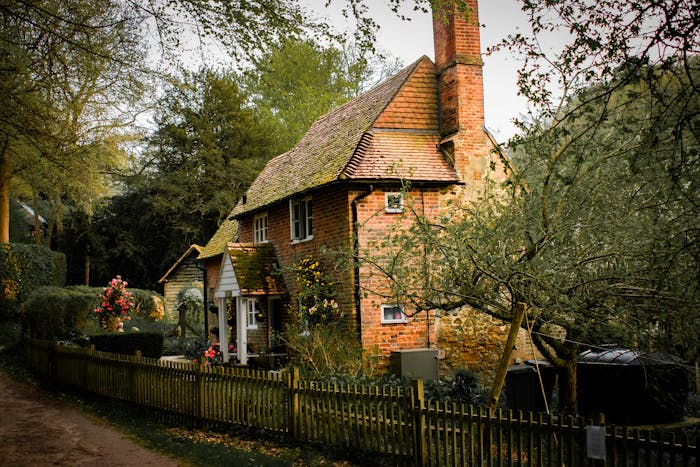Great Airbnb Home Description Examples and How to Write Them

If your vacation rental listing isn’t getting bookings, it’s not necessarily because of the property and its location. It could simply be that your property listing description isn’t describing your space as well as you could be able to.
Before you get quotes for costly home renovation projects or blow your budget on unnecessary amenities, let’s first look at whether your real estate listing description needs a bit of TLC. Instead of having to update your architectural style to something more modern, it could simply be that you need to paint a clearer picture and find better descriptive words to describe your space.
From the title to the actual description to the photos, here are a few practical tips on how to craft listing descriptions that stand out from the rest and ultimately generate a continuous flow of bookings. Remember to craft creative real estate descriptions as it may set you apart from your competitors!

How Do You Write Creative Real Estate Listing Titles That Entice Guests to Stay?
First things first, you’ll need a powerful title. Not only does a catchy Airbnb title help you to rank higher in the platform’s search results, but it also helps to attract potential guests to your property listing quickly. Creative real estate listing descriptions
Effective Airbnb titles arouse intrigue while at the same time communicating to travelers that your property will meet their expectations. Of course, real estate listing descriptions matter too, but titles and featured images are the first things that potential guests see.
While it has a big job to do, short titles are the best. You want to keep it short, sharp, and punchy. Word count is probably going to be your biggest challenge. In fewer than 50 characters, you need to offer enough detail about the best feature(s) of your listing.
Here are a few best practices to keep in mind when crafting a title:
Keep your target guest in mind
As mentioned earlier, your title should get travelers interested in your property. That said, it’s better to zoom in on a specific type of traveler, like business travelers, digital nomads, or families, than to appeal to the masses. The fancy term for this group of people is your “buyer persona”, but for a wider cast, you can think of your target audience/guests.
Which specific needs and expectations do your target guests have? What will your ideal guest enjoy most about your property? This is where you really step into the shoes of your ideal guest and think about what they would appreciate most about your property. Fill their needs and expectations as best you can.
When writing your Airbnb title, try to include these features or amenities that will address your target audience’s most important needs. For example, couples will value secluded locations over proximity to public transportation, while business travelers will prefer the latter.

Do they need a space to sit down and work? A desk area and fast, reliable internet is a big selling point then. Are you catering more to families with small children? An outdoor area to run and play would be an attractive addition to them. Throwing in some child safety features will also go a long way. Include this information in your creative real estate listing description.
If your property has more of a romantic feel, aim your description at couples and expand on the aesthetic of the master bedroom and romantic destinations in the surrounding neighborhoods. Our description examples to come will cover some of these features.
Less is more
Keep your titles to 32 characters or less.
Increasingly more travelers are using mobile devices to book accommodation. As mobile devices have smaller screens, longer titles won’t work as effectively. If a guest uses a mobile app, a longer title will automatically get shortened.
Airbnb suggests that hosts limit their titles to only 32 characters. If it’s impossible to stick to this character count, the second best course of action is to ensure that the most important information appears first. Always put your biggest selling point first, front and center. Guests scan listings more than ever before, so grab their attention right away.

Consider your grammar
It’s best practice to use the sentence case when writing your listing description page title. In other words, you’ll capitalize only the first letter of your title’s first word. ALL CAPS is seen as yelling — definitely not the tone that you want to create, while the title case is too formal.
Apart from the title’s first word, other words that should be capitalized are any proper nouns, like the town’s name, and certain abbreviations such as AC.
Here’s an example of how this property description will look in real life:
- Rustic cottage in London with AC (32 characters)
Focus on uniqueness
As you have only a limited number of characters, Airbnb suggests that you exclude information, like the city or number of bedrooms, that’s already shared in the search results. This way, you free up valuable characters that you can rather use to describe unique features, such as an office space.
While it’s unnecessary to mention the town or city again, you can refer to a nearby landmark to ensure guests know the whereabouts of your property.

Use descriptive words over emojis
Descriptive words that communicate the uniqueness of your property are more powerful than generic words and emojis. Then, if you want to emphasize a certain feature or improve readability, you can use a comma or a single dash.
Always have someone check your work
No matter the copy, always have someone proofread it for you. After spending a considerable amount of time on something, you’re bound to have gotten so used to the text that it’s harder to pick on mistakes or elements that just don’t read as well.
Having someone in property management read it for you would be the best way to gauge how compelling it is. They understand how important it is to make every word count and help you write the best possible title for your property listing.

How Do You Write a Description of a House?
When writing a listing description for a vacation rental platform like Airbnb, it’s strongly recommended that you break up the description into a number of paragraphs. This will improve readability tremendously, making it much easier for interested travelers to find the details that they need.
Intro to Property Descriptions
You should start every listing description by writing a short intro. The first paragraph should basically give a quick overview of all the biggest selling points before getting into the lesser details.
Think of the structure of your description as an inverted pyramid, i.e. have all the most important details at the top and have it funnel down to the least important stuff. By sticking to this format, you ensure that the most important draws are front and center and that they will capture the attention of your ideal guest.

The Body
After summarizing all the main attractions, you can turn your attention to describing your place room by room. Dedicate a short paragraph to each room that describes what they can expect.
Toward the end of your property description, use a couple of paragraphs to help familiarize guests with your neighborhood. You can, for example, describe accessibility to public transportation and amenities on offer such as restaurants and activities like hiking trails. A couple of local attractions to visit also won’t go unappreciated.
End off with a call-to-action
Round off your description with a call-to-action (CTA) that urges the guest to get in touch and book your accommodation.
These last few lines should solidify your pitch and be as inviting as possible while also making the next steps crystal clear. Take the guessing out of the equation by directing guests back to your booking buttons or the most direct way for them to get in contact with you.

Examples of Titles That Convert and Corresponding Listing Description
There are plenty of ways to craft the best real estate listing descriptions and titles, but sometimes you just need a point of reference to help back up your ideas.
If you’re in search of some inspo, here are examples of how you can apply these best practices when composing your own description.
Examples of listing description titles
- Private cottage with mountain view
- Spacious room near Eiffel Tower
- Beach house with gourmet kitchen
- Cottage with hardwood floors
- Elegant loft with dedicated office area
- Cozy bungalow with private garden

Property Description Examples
While you want your house to get noticed, guard against coming across as overly promotional. Here’s an example of the tone of voice that you can use when writing your description:
This quaint beach house spans nearly 2,000 square footage and is located close to the beach of Clifton. You’ll love our place because of the ample natural light that streams in through the floor to ceiling windows.
The master bedroom has a spacious walk-in closet and a king-sized bed. The other two bedrooms both have queen-sized beds.
The open floor plan makes it ideal for families or big groups. The gourmet kitchen flows into an inviting dining area that looks out on a tree-lined street.
We also have an outdoor swimming pool and a spacious backyard.
The popular neighborhood offers a wide range of other activities that include a wellness center, various restaurants, and tennis courts which are all within walking distance.

How Do I Get My Property Listing Noticed?
High-quality photos remain one of the best ways to generate interest and ensure your property gets noticed. Add a short and sweet title and you have a magic formula. It may sound strange, but websites from a local real estate agent are a great place to look for inspiration. The real estate agent usually hires professional photographers
While photos and titles have a key role to play in helping your property to stand out, these two critical elements can only do so much. Back that up with an accurate listing description and you can look forward to a high occupancy rate.
Then, to tie in your photos to your description, use phrases that will be a reflection of your photos. For example, if you mention that your outdoor area has a spacious backyard, your photos need to reflect that. Give more than just what’s in the photos if you can by describing any unseen details or more of the surrounding. You can even suggest some activities for the area.
Your creative real estate property descriptions should be
You can capture your photos as well as write the description on your own. You don’t need to be a professional photographer or accomplished writer. After all, who’s better equipped to tell your guests what they can expect when staying at your property than you?
Think of your property descriptions through the eyes of a spokesperson, because that’s what you are. Not only will it help your property to get noticed for all the right reasons, but by taking the time to write a detailed description you can also avoid having to answer the same standard questions over and over again. Guest communication can quickly take up the bulk of your time so preempting the FAQs will save you time in the long run.
Conclusion
All that said, even if you’ve written a detailed listing description, you’ll still receive questions about your home’s features. To help you streamline your guest communication, consider signing up for a vacation rental software solution.
A software solution such as iGMS can make organizing your messages and email a lot easier. It also offers automated templates and triggered messaging to improve guest communication.
On top of that, it can also help with:
- Managing multiple accounts and listings on the top OTAs from a single interface
- Synchronizing reservations across multiple platforms to eliminate the risk of double bookings
- Managing direct bookings using a direct booking management toolkit
- Receiving payouts and creating invoices by connecting your Stripe account to iGMS
- Creating your own website in minutes
- Sharing daily schedules with your team and auto-assigning tasks.







![Your Monthly iGMS Roundup [February 2020]](/content/images/size/w600/wordpress/2020/02/igms-roundup-feb-2020-cover.png)

